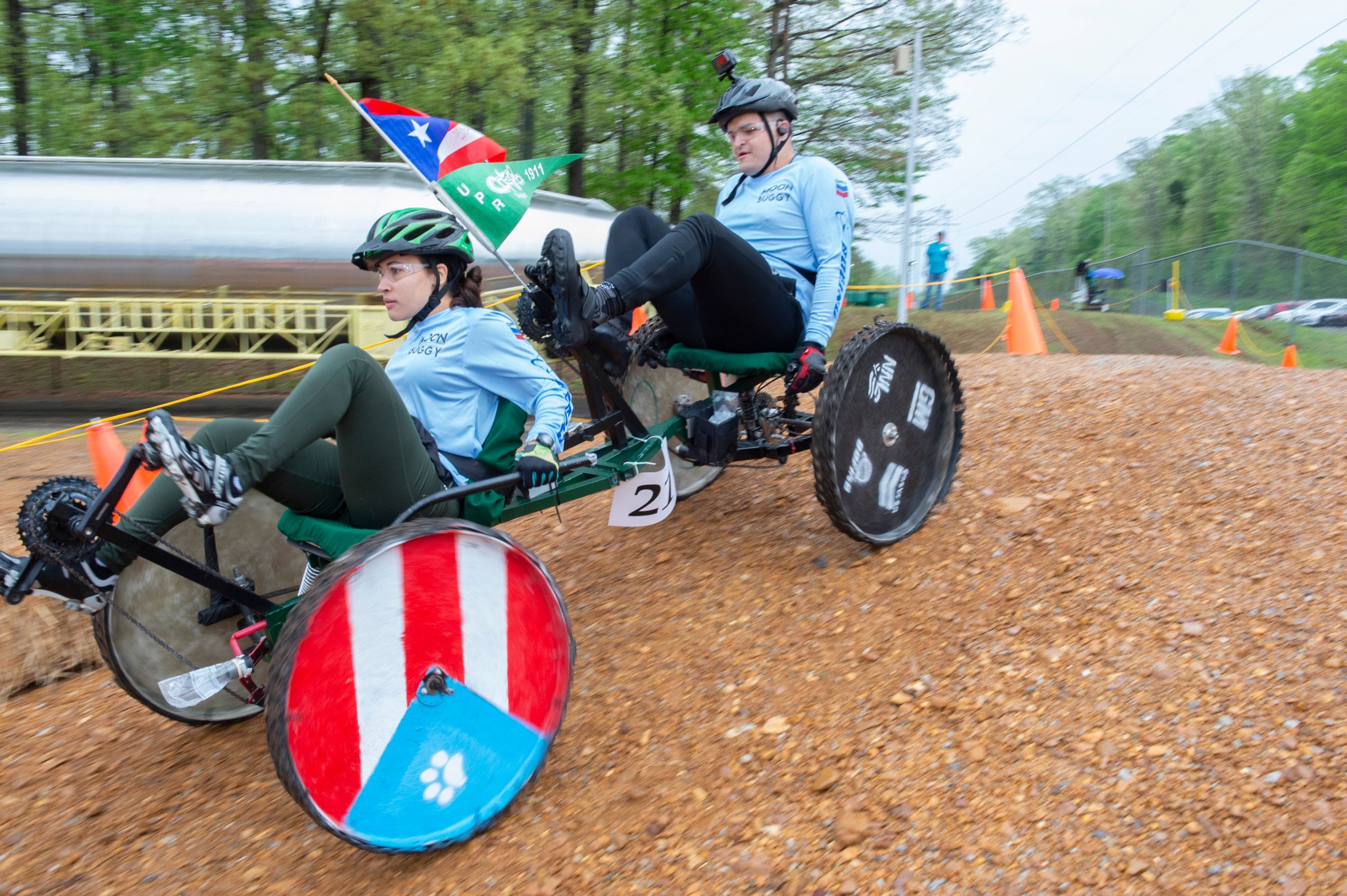Teams from around the globe will compete April 17-18 in NASA’s Human Exploration Rover Challenge at the U.S. Space & Rocket Center in Huntsville, Alabama.
More than 100 teams are expected to participate, including teams from 27 states, the District of Columbia, Puerto Rico, and 11 countries, such as Brazil, Germany, Egypt, Singapore, India and Mexico.
The 26th edition of the annual event, managed by the Office of STEM Engagement at NASA’s Marshall Space Flight Center in Huntsville, features students from high schools, colleges and universities around the world designing, engineering and testing a human-powered rover to take on a course simulating terrain found on the Moon and Mars, as well as other planets, moons and asteroids.
One female and one male driver will pilot each team’s lightweight rover across a grueling half-mile course that features obstacles and scientific challenges designed to force teams to think like NASA mission planners and planetary explorers.
While previous contests focused on finishing the course as quickly as possible, the challenge now focuses on strategy over speed. Participants are given a course map and task descriptions prior to the event, allowing them to devise a plan of attack that best suits each team’s strengths. Teams are given a time limit — simulating spacewalking astronauts’ oxygen supplies — to attempt as many obstacles and tasks as possible, thereby accumulating points. If teams fail to cross the finish line under the time limit, they will lose any points accrued during that run on the course.
Among the rule changes for the 2020 challenge is the addition of one minute — for a total of eight minutes — to finish the course, which gives teams a greater opportunity to complete more of the optional 14 obstacles and five science tasks. Additionally, NASA no longer allows teams to utilize pneumatic tires or other commercially purchased wheels on their vehicles.
The obstacles will simulate the terrain found throughout the solar system, and the tasks will challenge teams to collect and return samples, take photographs and deploy scientific instruments. Teams must decide which tasks and obstacles to attempt or bypass before their clock expires.
Each team will compete for the top three finishes, best overall design, rookie team and other technical challenges.
NASA’s Office of STEM Engagement and NASA’s Human Exploration and Operations Mission Directorate at NASA Headquarters in Washington, along with NASA partners Boeing, Jacobs Engineering and Lockheed Martin in Huntsville provide leadership and funding for the Human Exploration Rover Challenge.
Rover Challenge reflects the goals of NASA’s Artemis Program, which seeks to put the first woman and next man on the Moon by 2024. Like the Artemis Program, the event draws the best and brightest minds from around the world. Through the event, NASA hopes to engage, inspire and develop the next generation of engineers, scientists, astronauts, mission planner and NASA team members.
For more information about NASA’s Human Exploration Rover Challenge, visit:



























